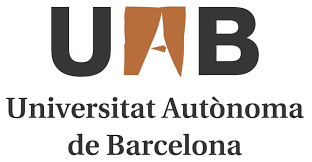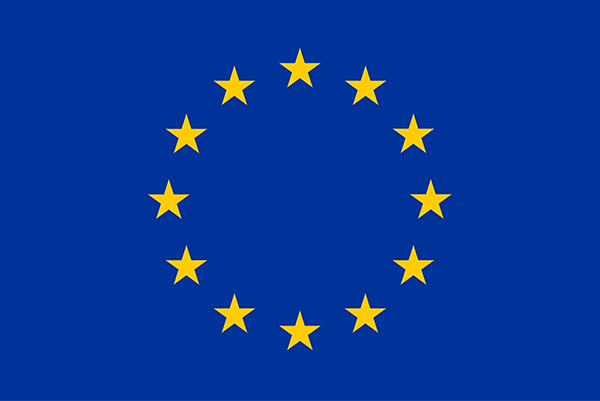
By Leon Dulce. Willem Geertman, a Dutch missionary and NGO worker, was shot dead in front of his office in San Fernando, Pampanga on the second of July, 2012. Geertman was the executive director of the humanitarian organization Alay Bayan Luson Inc. (ABI) that responded to underserved communities affected by disasters and environmental degradation. Geertman was a very active advocate against large-scale mining and logging and for forest protection in Aurora, Pampanga and Zambales.
His bereaved colleagues can see no other motivation for his murder than his commitment and determination to defend the people and our environment.
From the mass activists engaged in deep-seated ecological problems such as mining and deforestation, to the seemingly benign professions of biodiversity conservation, no ecological defender seems to be safe from various HRVs aimed at derailing public opposition to destructive development projects. Indeed, the Philippines’ veritable trove of natural resources has been the driving motive for massive extraction for profit, to the detriment not only of the balance in our ecology, but likewise to the people’s rights as well.
A Decade of Impunity towards Ecologists
The numbers in red are staggering: From 2001 up to 2012, a total of 58 environmental advocates have fallen victim to various human rights violations. Under the regime of Gloria Macapagal Arroyo, a total of 36 environmental defenders were murdered, along with two (2) reported cases of enforced disappearances and two (2) cases of frustrated murder.
The spike of annual HRV cases reported rose to 18 cases from 2005-2006, coinciding with the peak of Arroyo’s counter-insurgency program Oplan Bayanihan I (see Figure 1).
The decrease of cases over the next couple of years coincided with the reinvigorated mass campaigns of activists and rights advocates against the killings. This in turn gained international scrutiny through the report of United Nations special rapporteur Phillip Alston that lambasted state agencies for perpetuating impunity towards thousands of Filipino citizens. However, the Arroyo decade ended with the rising trend of cases with the implementation of Oplan Bantay Laya II from 2007-2011.
Aquino’s Pathway paved in Blood
The promise of reforms under the “Tuwid na Daan” banner of Pres. Benigno Aquino III, far from delivering swift justice to the families of HRV victims and promoting a humanitarian regime, only served to perpetuate impunity. 17 cases of politically-motivated killings and one case of abduction and torture have already been recorded under Aquino, including the high-profile cases of Palawan environmentalist Dr. Gerry Ortega and world-renowned botanist Leonard Co.
There is no wonder why human rights violations towards environmental defenders persist: the same old policies of the Arroyo regime on protecting investments remain in place under the Aquino administration. The government continued to deploy Special CAFGU Armed Auxiliary (SCAA) and other army units under the Investment Defense Forces, in mines and other sites of development aggression, whose forces are linked to the murder of the Italian missionary and anti-mining leader Fr. Pops Tentorio, among others.
Aquino has also under-prioritized the resolution of HRV cases through the justice system. It was reported that minimal resources were allocated for the team pursuing the Reyes brothers, suspected masterminds of the killing of Dr. Ortega. The resolution of these cases is also further delayed by the snail’s pace at which the Department of Justice operates. In fact, not a single case has been resolved since 2001.
Apex of Killings in Mining and Mindanao
The aggressive expansion of the mining industry is seen as a major driver of HRVs towards environmental defenders. Of the 58 HRV cases documented since 2001, 46 cases involved anti-mining activists or 79 percent of the total recorded (See Figure 2). This excludes harassments and economic, social and cultural rights (ESCR) violations.
Five cases involved anti-large dam advocates, one coal-fired power plant activist, six anti-logging activists, one anti-landfill campaigner and four conservation advocates. Some individuals were involved in various advocacies such as Fred Trangia, a biodiversity conservationist and barangay leader who was also a staunch opponent of mining interests in Mainit, Compostela Valley.
Majority of the HRVs during the Arroyo regime occurred after their declaration in 2004 the revitalization of the mining industry through the Mining Act of 1995 and other mining policies. The same trend persists under Aquino, with 14 of the 18 cases of HRVs, majority of which are killings, exacted upon mining activists.
While most HRVs occurred in militarized areas such as Cagayan Valley, Mindoro, Leyte, Palawan, Southern Tagalog, and Bicol, majority of the cases especially under Aquino occurred in Mindanao. Ten cases were documented in Zamboanga, Surigao del Sur, North Cotabato, Bukidnon, Davao Oriental and Compostela Valley, and are largely attributed to Mindanao being the most mineral-rich region in the Philippines as well as most active in opposition to mining expansion.
A Harassment Offensive
It was observed during the institutionalization of Oplan Bayanihan in 2011 that a renewed strategy of harassments towards social and environmental activists seems to be part of its implementation. In 2011, at least eight cases of harassments were recorded, including the vilification of Geobelyn Lopez, secretary-general of Madia-as Ecological Movement, and Hope Hervilla, head of the Visayan Coalition for the Ecology as NPA rebels. Belen Galleto of the Save Pantukan Alliance in Compostela Valley also received death threats.
Violations worsened going into 2012, with three students of the UP Diliman College of Social Work and Community Development who were engaged in field work with Aeta communities opposed to mining in Pampanga being physically and psychologically harassed by elements of the Philippine Army last January.
As a testament to its being the epicenter of HRVs towards ecologists, at least seven community and church leaders leading environmental campaigns in Mindanao reported the continuation of long-standing harassment directed towards them by military agents, including Galleto, Sr. Stella Matutina, a Benedictine nun, and Fr. Peter Geremia, a fellow Italian missionary of Fr. Tentorio. Nine Journalists and two human rights advocates were also harassed by SCAA units hired by mining corporation TVIRD when they tried to verify reports on the ground of impending demolition of houses near their exploration site. The latest cases are Gold Star Daily journalists in Cagayan de Oro harassed by large-scale illegal logging entities.
Institutions such as the Assumption College of Davao, who support the Justice for Fr. Pops Movement, are also threatened by no other than AFP general Leopoldo Galon. The Rural Missionaries of the Philippines and community teachers from the Fr. Pops Foundation are likewise threatened institutions by military occupations of their schools and communities which they use as detachments.
A Call to Protect Environmentalists
Embattled though environmental advocates may be, the struggle to protect the environment and its defenders is a commitment that thousands of Filipinos are willing to dedicate their lives to. The Ortega Family has continued not only in the pursuit of justice for Dr. Gerry, but in gathering more signatures for the No to Mining in Palawan campaign that Ortega helped found. In March 2011, the Task Force-Justice for Environmental Defenders (TF-JED) was formed by various families and colleagues of victimized environmentalists to consolidate efforts in pursuing legal cases against perpetrators of HRVs.
The victims of harassment have resolutely carried on with their respective struggles against large-scale mining, large dams, massive deforestation and other environmentally destructive and pollutive industries. Sr. Matutina has subsequently filed charges against her harassers, the 28th and 67th infantry battalions, with the Commission on Human Rights. Green groups have aired their grievances to the United Nations Human Rights Council through a statement filed calling for the resolution of outstanding cases of HRVs towards ecologists, the stoppage of vilification of activists, and the dismantling of paramilitary forces and Oplan Bayanihan, among others.
Environmentalists are fast becoming an endangered species. The Aquino government has at present failed to assuage threats on the lives of environmental defenders, and must meet the efforts of environmental and rights advocates to uphold the democratic rights of ecologists halfway through if it genuinely intends to do so. For us who believed in the struggles of Willem Geertman and all the other environmental heroes, no better commendation for them can be offered but to steadfastly carry on their legacy.###
Leon Dulce is the campaign coordinator of the Kalikasan People’s Network for the Environment, and a convener of the Task Force-Justice for Environmental Defenders.
Source: http://www.kalikasan.net/features/2012/07/04/environmentalists-becoming-endangered-species





Devemos defender os equilibrio dos ecossistemas e a proteção da saúde das pessoas agir por um futuro melhor